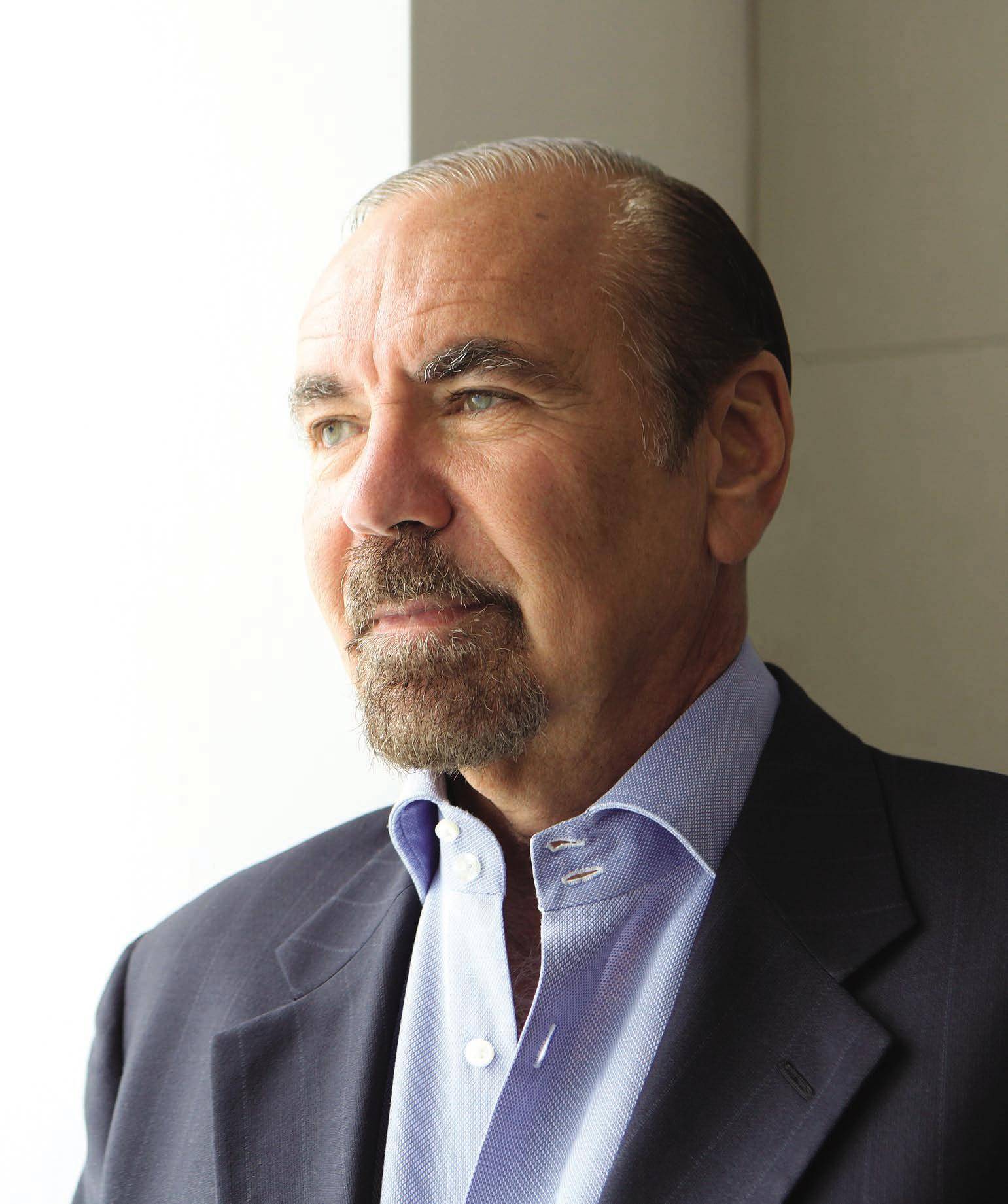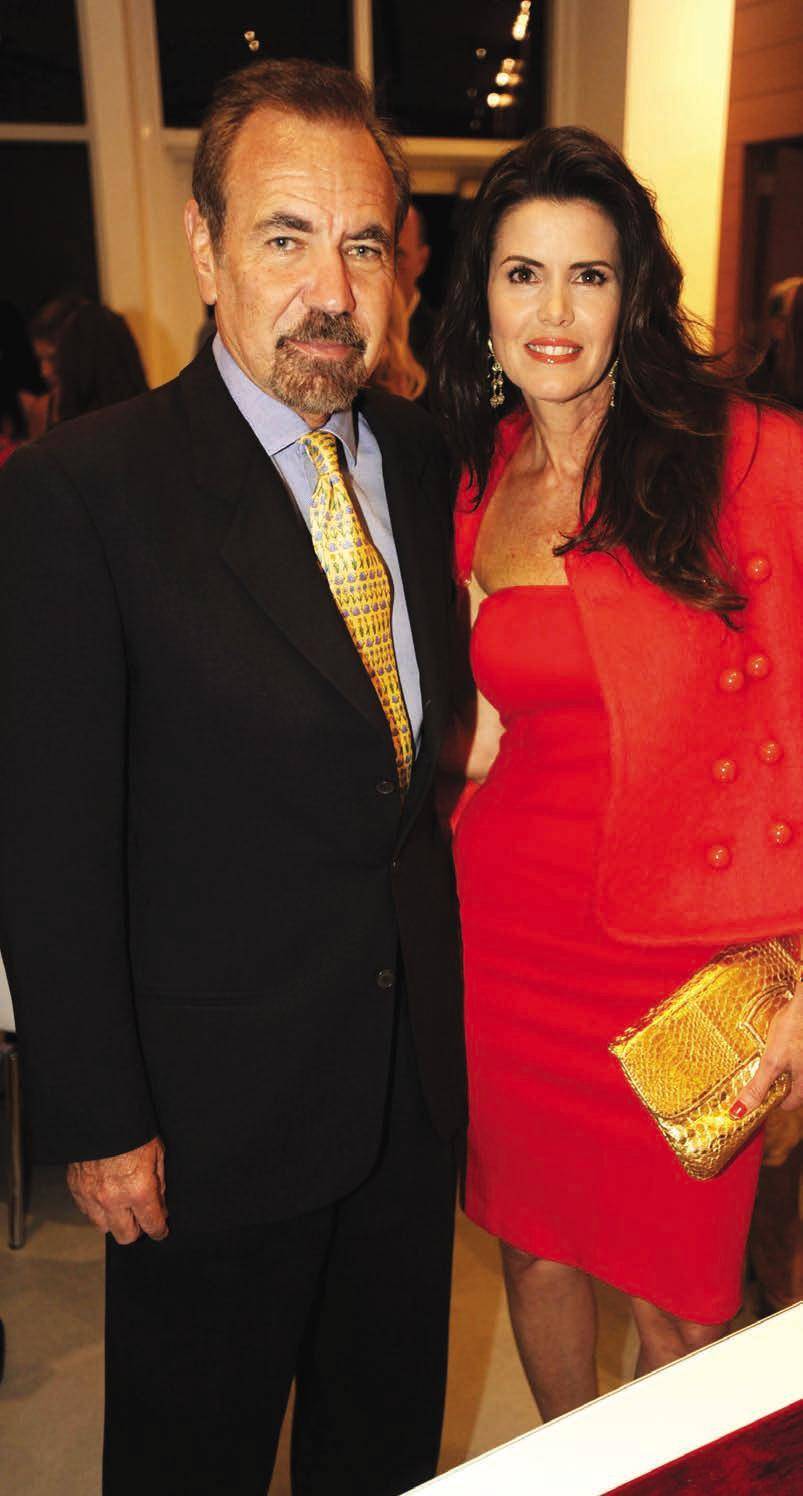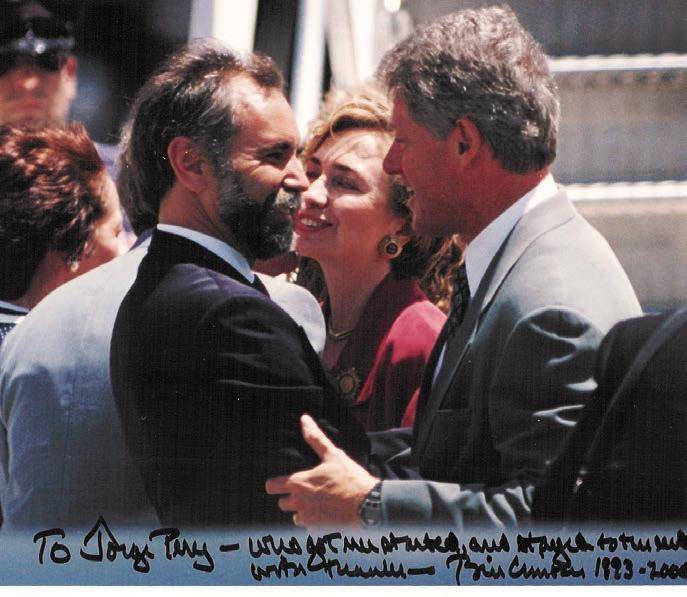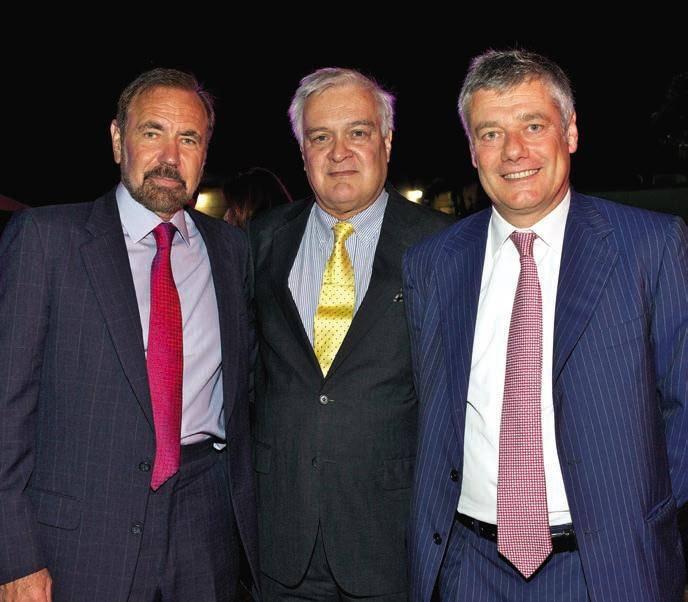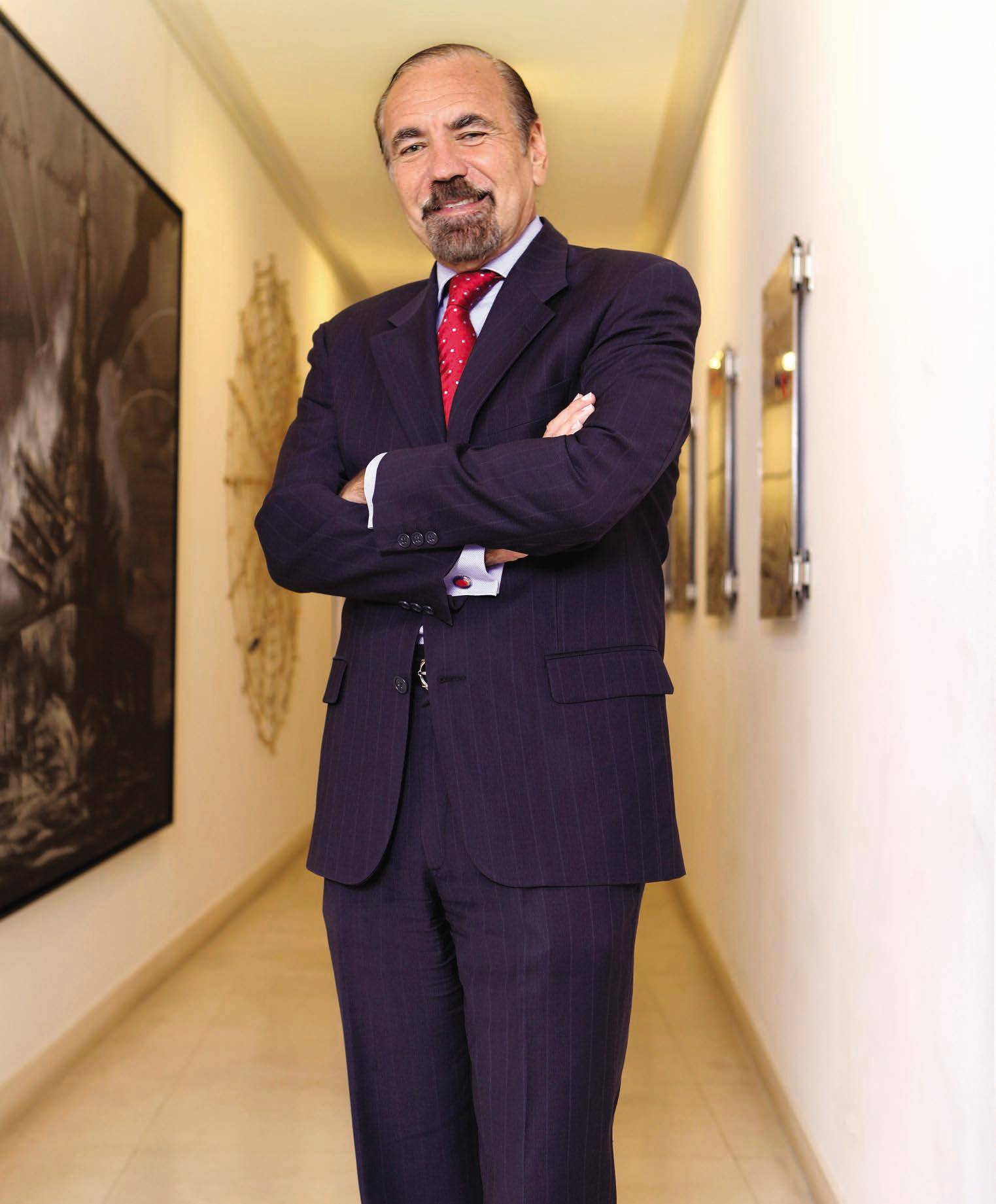The Rebirth of Jorge : A Jorge Pérez Story
Jorge Pérez is sitting in his art-filled Related Group offices in One Miami, a waterfront tower at the beginning of Biscayne that he built. It is twenty minutes before our appointed time, but the 62-year-old developer is ready. Not just so he can hurry up and move on to the next appointment, but because he is completely, refreshingly present in the moment, ready to engage. He is charmed yet charming, alert, yet easy-going; detail-oriented while still seeing the big picture. And, after getting to know him better and learning about his incredible life and talents, I am convinced that Dos Equis’ “Most Interesting Man In The World” character, must have been, could only have been, based on Jorge M. Pérez.
Pérez has been the biggest name in development in Miami for a long time now and he’s about to become the biggest name in art, too. Pérez has given a substantial $40 million dollar gift to the Miami Art Museum, which will henceforth be called the Pérez Art Museum Miami, or PAMM. The gift broke down to $20 million in funds and $20 million in blue-chip, South American art from mid 20th century artists like Wilfredo Lam and Diego Rivera. The gift marked the beginning of a new era for the PAMM, which at the end of the year, will be moving into their down the street from Pérez’s office. It also marked a new chapter for Pérez who is bouncing back from the recession with 11 new condo projects, 12 rental and 8 affordable housing projects in the works. With this new chapter, it is safe to say that Jorge M. Pérez is officially back on top.
[highlight_text] “I’ve really been extremely lucky. Some people work just as hard, are just as intelligent and they don’t get their breaks. I’ve just gotten the breaks,” [/highlight_text]
The son of Cuban exiles, Pérez had an atypical trajectory to South Florida after growing up and living in Argentina and Colombia. “I saw two people that lost everything in their middle age and had to restart with nothing,” he says, explaining that his mother had never had to work, or even drive a car. “They had drivers!” Hard as the change was, Perez says, they handled it gracefully. “They never complained and showed a tremendous strength of character. I saw the strength of not giving up. I saw people that loved life,” he says of his parents.
Jorge Pérez arrived in Miami at the age of 18, and entered Long Island University C.W. Post College where he graduated Summa Cum Laude and then attended the University of Michigan, where he received a Masters in Urban Planning with the highest honors. Interestingly enough, he didn’t set out to become a developer, or even a businessman. He saw himself as a creative soul with a passion for cities. “I started my career as an urban planner, working for the city, doing what I would call ‘do-gooder’ things, particularly for lowincome neighborhoods,” explains Pérez.
One of those things was to create housing and neighborhood development programs. After a while, he also started to consult people on real estate, and eventually the two came together. “The government was giving people a lot of financing so they could build low-income housing. And I said to myself: ‘Wow, this is a great opportunity to go into a new area, to actually see buildings go up, and have a social purpose, which is also very important to me.” This is how Pérez got into developing and the specific affordable housing milieu in which he stayed for nearly a decade. He would become the largest creator of affordable housing in the state, constructing a staggering number of buildings.
Reflecting on that period Pérez explains, “It was wonderful because it allowed me to create these buildings and jobs. It was nice to see [the people living in these places], the elderly inviting you to their house, particularly the Cubans, with their little cups of coffee. There was a really good feel that you were doing something right and, at the same time, making money doing it.”
As Perez’s business took off, he found himself frustrated with the first Bush administration and decided to get involved, although he wasn’t sure how or with who. Eventually, he took an interest in the Governor of Arkansas, a long-shot presidential candidate who Pérez says had little chance of winning. He went out to meet Bill and Hillary Clinton, and confesses that he “actually kind of fell in love.” “He’s probably the most intelligent man that I have ever met and certainly the most charming,” he says.
Clinton swept the election and Pérez became a confidante who traveled many times to the White House to not only socialize with Clinton, but also offer advice on Cuban policy. Perez was appointed Co-chair of the First Summit of the Americas in 1994 and was also offered a diplomatic appointment. “I really wanted to be Ambassador to Argentina,” explains Pérez of his birth country. However, Pérez was going through a divorce and feared he would never be able to see his children if he was always in Buenos Aires.
Instead, the serious film buff asked to sit on the Board of the National Endowment of the Arts and loved it more than he could have imagined. “You are discussing all the programs of the arts in the entire United States. We had all kinds of great, intelligent people on the board, actors, artists, a Jesuit priest, the head of Georgetown.” This was at a time when congress was constantly trying to take money away from the arts, and Pérez relished fighting to keep it.
With his creativity flowing, the developer began to want to break out of the constraints that low-income housing projects come with. So he segued into the private sector in order to work on more large-scale project architects and designers like Carlos Ott and Yabu Pushelberg. He played a pivotal role developing South Beach’s South of Fifth area starting with the Portofino Tower in 1997, put up towering condos in Sunny Isles and transformed downtown Miami with big, elaborite projects. His piece de la resistance was Icon Brickell and Icon South Beach, two properties that marked a turning point for Pérez. He worked with über-designer Philippe Stark on both projects to realize a high-concept design style that, until that point, had only been seen in hotels. Unfortunately the project not only represented the pinnacle of design, but as it came to completion in 2009, a highly visible fatality of the real estate bust.
“It was the only financial downturn that I’ve had in my career, it was something totally new to me,” says Pérez, who surprisingly did not draw parallels to his experience of midlife loss. “That didn’t even enter into my mind,” he explains. “But believe me, there were some days there that were so dark, you think ‘How am I going to get out of this thing?’ To wake up and know there are 80 lenders wanting to get paid and you have this staff and all these immense buildings, and all of a sudden, no buyers!”
He was focused on two things: how to survive the crisis and negotiate with creditors while focusing on continuing to grow. The growth, which he calls his “his light at the end of the tunnel,” was buying distressed assets. So, on one hand he was in “rapid financial decline” because of his buildings and on the other, building a portfolio of distressed assets. It was this strategy that Pérez attributes to a successful relaunch.
Pérez, who famously said, “If I die and am worth $50 million as opposed to $3 billion, it is really not important,” doesn’t want to underplay the effect of that tough period. “It’s hard just to wake up in the morning, brush your teeth, come into the office and say ‘I’m going to do it’, and set up a plan and motivate everybody else so that nobody loses faith.” But Pérez confesses that some days he did lose faith, if only for brief periods. “You just have to kick yourself harder, life is like that.”
Now he has come out the other side and is working on a slew of new projects including the SLS Hotel & Residences, One Ocean and Icon Bay. He is also witnessing the fruits of his labor downtown, which has come alive with people. He can walk to lunch to a number of amazing restaurants and is elated that his two grown sons and daughter absolutely love it.
Pérez is also enjoying being a dad again to his youngest, a 9-yearold son with his wife Darlene, and excited that his older children are coming back to Miami as wonderful adults. “I’ve really been extremely lucky. Some people work just as hard, are just as intelligent and they don’t get their breaks. I’ve just gotten the breaks,” he says. “Maybe it’s good karma.”

